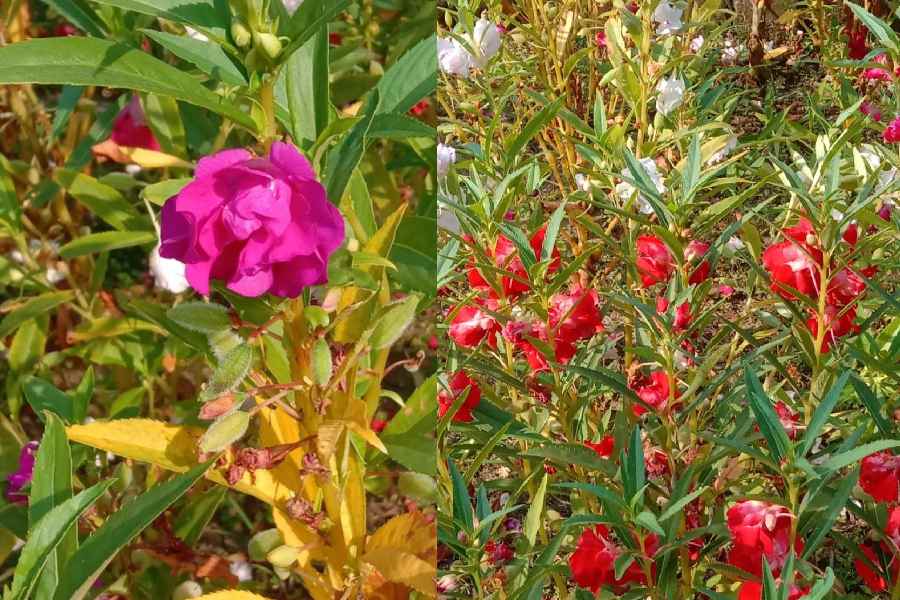It has colourful flowers, attractive leaves, and with some care, the Balsam, or Dopati, will grow readily in your front yard.
Balsam is an ornamental plant. It produces lovely colourful flowers and is popular for garden beds, borders, and containers. The versatile plant can bloom throughout the year, as it is suitable for all-season planting in many Indian climates. It is known for its continuous flowering during its growing season, with some varieties capable of blooming round the year.
The Balsam is an annual flowering plant of the Balsaminaceae family (translucent stems and bilaterally symmetrical flowers). The flowers bear double petals and come in a selection of colours (white, red, orange, yellow, violet, and pink) but are partially hidden by large, attractive leaves with prominent veins.
The plant is commonly known as Balsam, Rose Balsam, Garden Balsam, Touch-Me-Not (pods which form and burst at the slightest touch), or Spotted Snapweed. It is a species of plant native to India, Myanmar and Sri Lanka. Balsams are very low-maintenance.
The flowers attract butterflies and other pollinators to gardens. It is used in India extensively for puja offerings, too. It is scientifically known as Impatiens Balsamina.

A double-petaled white Balsam
Care- plant them in well-draining soil in a partial to full shade location or full sun if the climate is not too hot. Keep the soil constantly moist. Water them from below to prevent powdery mildew. Use well-draining soil, rich in organic matter like compost (cow manure/ vermi compost etc), and try not to over-fertilise as too much can promote leaf growth over flowers.
Soil- Use well-draining, evenly moist soil and add compost and organic matter to improve soil quality. For pot culture, a mix of soil with coarse sand and compost is suggested.
Light- Provide partial to full sun for vigorous plant growth. Avoid placing in complete shade as it needs the sun to grow and bloom well.
Watering- Keep the soil consistently moist, but not waterlogged. Water more frequently in hot weather or for container plants. Water the plants from below to prevent powdery mildew, using a hose pipe or drip irrigation system if possible.
Fertilising- Use a balanced fertiliser (NPK- 19:19:19), but avoid over-fertilising, which can lead to more leaves than flowers. Once a month, a liquid fertiliser like fermented mustard cake water or fish emulsion is adequate for prolific flowering.
Pest and diseases- Apply neem oil mixed with any liquid detergent and spray on the plants to control insects. Fungicides like Saaf or Babistin can also be used to protect against fungal infections, especially in rainy seasons.
Propagation- You can directly sow in a garden where the soil warms up early in the spring. Cover the seeds with just a dusting of soil and keep evenly moist. In garden flats, cover the top of the soil with plastic to encourage germination and keep in moisture. When growing Balsam plants from seed, the germination process takes place in approximately 10 to 12 days.
Juvenile Balsam plant care should include a slow-release fertiliser at transplant, when plants are at least 1.5 to 2 inches tall and have a good root system. Space plants 12 to 18 inches apart. At the end of the season, collect the seed pods, let them dry, and store them in a cool, dark place until the next planting season.
Medicinal uses- The flower is used to treat skin ailments, joint and muscle pain and other ailments, such as fractures, gastritis and constipation.










